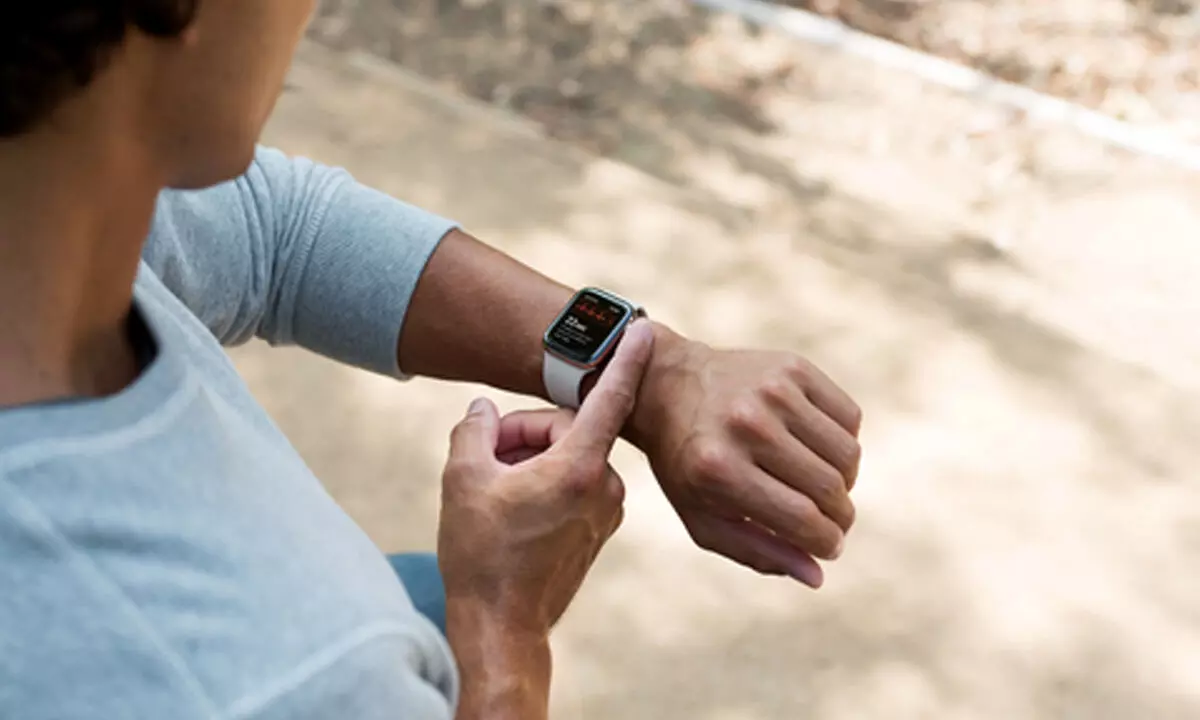World Heart Day: How heart health tools on Apple Watch can save many lives
Share :

Ahead of World Heart Day on September 29, the World Heart Federation is encouraging people around the world to take care of their heart and Apple Watch, which has alerted several users around the world of potential signs of atrial fibrillation (AFib), is one digital device that can be your health companion.
New Delhi: Ahead of World Heart Day on September 29, the World Heart Federation is encouraging people around the world to take care of their heart and Apple Watch, which has alerted several users around the world of potential signs of atrial fibrillation (AFib), is one digital device that can be your health companion.
Apple Watch Series 9, and previous models too, check for unusually high or low heart rates in the background, which could be signs of a serious underlying condition. This could help users identify situations that may warrant further evaluation.
If a user's heart rate is above 120 bpm or below 40 bpm while they appear to have been inactive for 10 minutes, they will receive a notification.
Users can adjust the threshold bpm or turn these notifications on or off. All heart rate notifications — along with date, time, and heart rate — can be viewed in the Health app on iPhone.
The irregular rhythm notification feature on your Apple Watch will occasionally look at your heartbeat to check for an irregular rhythm that might be suggestive of atrial fibrillation (AFib).
AFib is a type of irregular heart rhythm where the upper chambers of the heart beat out of sync with the lower chambers. Some individuals with AFib don’t experience any symptoms.
Others experience symptoms that could include rapid heartbeat, palpitations, fatigue, or shortness of breath.
Irregular rhythm notifications use the optical heart sensor on Apple Watch to detect the pulse wave at the wrist and look for variability in beat‑to‑beat intervals when the user is at rest.
If the algorithm repeatedly detects an irregular rhythm suggestive of AFib, you will receive a notification and the date, time, and beat‑to‑beat heart rate will be recorded in the Health app.
With the ECG app, users who experience symptoms, such as rapid or skipped heartbeat, can capture an ECG and record their symptoms.
The ECG app uses the electrical heart sensor built into the Digital Crown and the back crystal to record a single-lead ECG. The ECG app then provides a result of sinus rhythm, atrial fibrillation, atrial fibrillation with high heart rate, inconclusive, or poor recording, and prompts the user to enter any symptoms such as rapid or pounding heartbeat, dizziness, or fatigue.
The recorded waveform, results, date, time, and any symptoms are recorded and can be exported from the Health app as a PDF to share with a clinician.
The Cardio Fitness feature provides an estimate of VO2 Max, or your body's ability to intake oxygen during exercise.
Heart health experts recognize VO2 Max as a powerful predictor of overall health and Apple has brought this technology to all users as Apple Watch can give you a scientifically validated estimate of VO2 Max.
Users can even opt in to receive a notification if their classification drops to "low," which is associated with risks of serious longterm health conditions. Fortunately, it is something you can improve by exercising more frequently or more rigorously, and something you can easily track along the way.
AFib History gives you an estimate of the amount to time your heart shows signs of AFib. This is important because research has shown the amount of time spent in AFib can relate to severity of symptoms, quality of life issues and risk of complications.
AFib History also allows users to track specific life factors like sleep, exercise and weight, which may influence the amount of time spent AFib.
Historically, there hasn't been an easy way to track AFib overtime or to compare them to important life factors. Now you can do this simply by wearing an Apple Watch.













